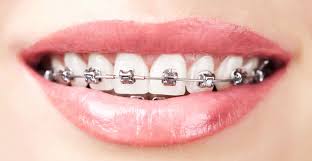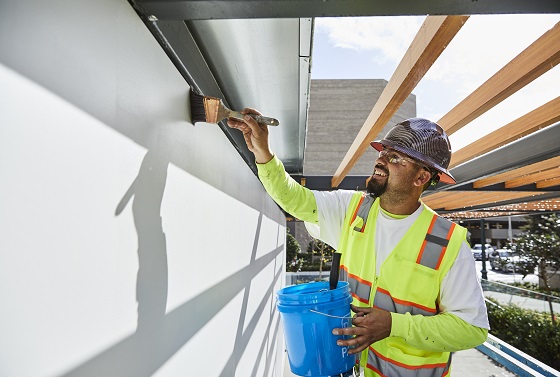Choosing the right orthodontic treatment can be challenging. There are many options available today, and each one is different. Understanding these choices can help you make an informed decision.
Knowing the differences between traditional braces and clear aligners can help you determine which treatment is best for you. In this blog post, we will explore comprehensive orthodontic treatment and its benefits to help you make an informed decision.
Traditional Braces: A Reliable Option
Conventional braces are a tried-and-true technique for straightening teeth that have been in use for many years. They are made of metal brackets that are attached to the teeth with glue, wires connecting them, and elastic bands holding them in position. The following are some advantages and disadvantages of conventional braces:
Benefits of Traditional Braces
Traditional braces are a reliable way to fix crooked teeth. They can correct many types of misalignments, improving smiles for people of all ages. People often choose traditional braces for their effectiveness over time.
Another benefit is that traditional braces are usually more affordable compared to other options. They often have lower upfront costs than clear aligners. This makes them a popular choice in many affordable cosmetic dentistry plans.
Traditional braces do not get lost or misplaced like removable options. They are always on your teeth, working continuously. This constant pressure helps to move teeth into the desired positions effectively.
Drawbacks of Traditional Braces
While traditional braces are effective, they also have some drawbacks. One major issue is discomfort. The metal parts can irritate the inside of the mouth.
Another drawback is the maintenance they require. Brushing and flossing with braces can be challenging. Food can get stuck in the brackets, making good oral hygiene important.
Traditional braces can affect how you speak. Some people find that their speech changes when they first get braces. It may take time to adjust and feel comfortable.
Traditional braces are visible. Many people worry about how they look with metal on their teeth. This visibility can make some feel self-conscious during treatment.
Invisalign: A Modern Solution
Invisalign is a relatively new treatment option for correcting misaligned teeth. This method uses clear, custom-fit aligners to gradually move the teeth into proper alignment. Here are some things you need to know about Invisalign:
Benefits of Invisalign
Invisalign has many advantages for people looking to straighten their teeth. First, the aligners are clear, making them hard to notice. This helps you feel more confident during treatment.
Another benefit is the comfort of Invisalign. The aligners are made of smooth plastic, which means less irritation. Many people find them easier to wear than metal braces.
Invisalign is also convenient. You can take out the aligners when you eat or brush your teeth. This makes it simpler to maintain good oral hygiene, which can help lower cosmetic dentistry cost in the long run.
Drawbacks of Invisalign
Despite its many benefits, Invisalign is not without its downsides. One major issue is that the aligners must be worn for 20 to 22 hours a day to be effective. This means that patients need to be very disciplined about wearing them.
Another drawback is the potential for loss or damage. Since the aligners are removable, they can easily be misplaced or broken. This can lead to delays in treatment and additional costs to replace them.
Invisalign may not work for every type of misalignment. Some complex cases require traditional braces for better results. It is important to consult an orthodontist to see if Invisalign is the right choice for you.
Lingual Braces: Hidden Correction
Lingual braces are similar to traditional braces, but they are placed on the back of the teeth instead of the front. This makes them invisible from the outside and a popular choice for those concerned about aesthetics.
Benefits of Lingual Braces
Lingual braces offer several benefits for people seeking to straighten their teeth. One of the main advantages is that they are hidden behind the teeth. This means they are not visible when you smile, making them a great option for those who want discretion.
Another benefit is that lingual braces work like traditional braces. They can correct many types of misalignments effectively. Most people find that they provide similar results, so you can achieve a great smile.
Seeing a private dentist can help ensure your lingual braces are fitted properly. This can lead to better comfort and results. Overall, many patients choose lingual braces for their effectiveness and hidden nature.
Drawbacks of Lingual Braces
Lingual braces can be difficult to adjust to at first. The braces are placed on the back of the teeth, which can cause discomfort for some people. This discomfort may last for a few weeks as your mouth gets used to them.
Another drawback is that they can affect your speech. Many users report a slight lisp or difficulty pronouncing certain words. While most people adjust over time, it can be frustrating during the initial period.
Cleaning lingual braces can be challenging. Food particles can get stuck, making it tricky to maintain good oral hygiene. This can increase the risk of cavities and gum issues if not managed carefully.
Fastbraces: A Speedy Solution
Fastbraces is a relatively new treatment option that can drastically reduce the time needed to straighten teeth. They use triangular brackets and square wires instead of traditional round ones, which allows for faster movement of the teeth.
Benefits of Fastbraces
Fastbraces can greatly reduce the time needed to straighten your teeth. Many patients see results in just a few months. This is much quicker than traditional braces, which may take years.
Another benefit of fastbraces is their design. They use special brackets that work on both the roots and crowns of the teeth at the same time. This faster process means less time in the orthodontist’s chair and fewer adjustments.
Fastbraces are also comfortable for many people. Since the wires and brackets are smaller, they often cause less irritation. Overall, the benefits of orthodontic treatment with fastbraces make it a popular choice for those seeking a quicker smile.
Drawbacks of Fastbraces
Although fastbraces offer many benefits, there are a few drawbacks to consider. Some patients may feel discomfort during treatment. This discomfort can happen when the teeth start moving, and it may last for a short time.
Another concern is that not everyone is a good fit for Fastbraces. They might not work for complex cases that traditional braces can handle better. It is important to consult an orthodontist to see if Fastbraces is right for you.
It’s crucial to keep up with your orthodontist visits with Fastbraces. Regular check-ups help make sure your treatment stays on track. Skipping appointments or not following the treatment plan can lead to longer treatment times and potentially higher costs.
Consultation and Customization
Consultation is an important step in choosing orthodontic treatment. During this meeting, you can discuss your goals and concerns with an orthodontist. They will help you understand which treatment options are best for you.
Customization is key to getting the best results. The orthodontist will create a personalized plan based on your needs. This plan may include special tools or techniques tailored to your unique smile.
Regular follow-ups are also important for successful treatment. The orthodontist will check your progress and make adjustments as needed. This ensures that your treatment stays on track and that you achieve the smile you want.
Cost Considerations
When choosing orthodontic treatment, cost is an important factor. Prices can vary greatly depending on the type of braces or aligners you choose. It is essential to understand what you can afford before making a decision.
Most dental insurance plans cover some orthodontic treatments. It is a good idea to check with your insurance provider. Knowing what is covered can help you plan your budget better.
Some orthodontists may offer payment plans. This makes it easier for patients to afford treatment over time. Always ask about available options to manage your costs effectively.
Maintenance and Aftercare
Once your orthodontic treatment is complete, maintaining your smile is crucial. You may need to wear a retainer to keep your teeth in place. Retainers help prevent your teeth from shifting back to their original positions.
Good oral hygiene is important even after treatment. Make sure to brush and floss regularly to keep your teeth and gums healthy. Regular check-ups with your dentist will also help catch any issues early.
Eating a balanced diet is key to maintaining your smile. Avoid hard or sticky foods that could damage your teeth or retainer. Staying mindful of what you eat will help protect your smile for years to come.
Unveiling Your Best Smile: The Path to Comprehensive Orthodontic Treatment
Choosing the right orthodontic treatment is important for your smile. Each option has good points and bad points. It is vital to think about what is best for you.
Consulting with an orthodontist will help you understand your options. They can guide you in picking the best choice. A clear plan will lead to better results.
Remember that comprehensive orthodontic treatment can improve your confidence.
Keep an eye for more news & updates on Essential Tribune!








